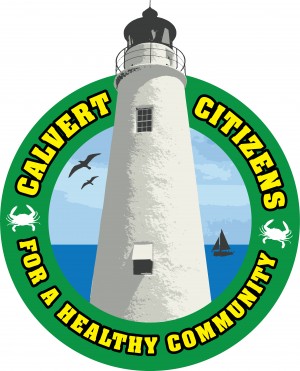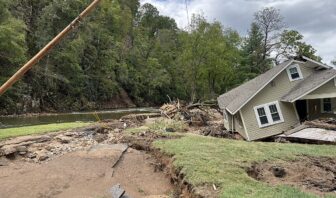Contact: Tracey Eno, Calvert Citizens for a Healthy Community, 443-624-8022, traceyeno@comcast.net
LUSBY, MD—Calvert Citizens for a Healthy Community (CCHC) responds to the Federal Energy Regulatory Commission (FERC) decision to grant Dominion Cove Point LNG approval to build an LNG refinery/export facility directly adjacent to their neighborhoods:
“We are appalled that our government officials and agencies show such blatant disregard for the health and lives of fellow Americans by allowing this project to be the first LNG export facility—in the history of the world—to be built in such a highly populated residential area. Lusby, Maryland, with a population of 20,483 people, is the wrong place for this dangerous industry. Without a complete Environmental Impact Statement (EIS) and Quantitative Risk Assessment (QRA) the hazards of this operation are not fully analyzed, thus there is no way to adequately mitigate and prepare for all possible harm to residents and first responders.”
CCHC is determined to re-double their opposition. “At this point, we have nothing to lose, because we have EVERYTHING to lose. This is not a done deal, it’s merely the beginning of the next chapter,” says Tracey Eno, a spokesperson for CCHC.
Founded in November 2013, Calvert Citizens for a Healthy Community (CCHC) is a community organization that formed in opposition to the proposal to transform a dormant liquefied natural gas import facility in Lusby, MD into a major industrial refinery and export terminal in Lusby (Calvert County, Maryland).
Eno continues, “Considering that our County Commissioners signed a non-disclosure agreement and refused to discuss Dominion publicly, and considering that Dominion does not want the public to understand the hazards of their plan, citizens felt it imperative to focus their efforts on saving themselves. The organization’s purpose is to research and disseminate information about public safety and environmental hazards related to the Dominion Cove Point (DCP) plant which may not otherwise be public knowledge.”
Contrary to DCP’s representations to FERC, suggesting that DCP is in a remote area, approximately 360 homes and a public park lie within just 4,500 feet of the DCP site. This is of significance, considering that during their research, CCHC discovered a 2006 MD DNR report which shows those homes to be at risk of a flash fire NOW—before any new equipment is even added.
From the start, the people living near the DCP facility have not been represented or protected by elected and appointed officials responsible for ensuring their health and safety—from the county to state to federal levels:
(a) The Calvert County Board of County Commissioners (BOCC) signed a non-disclosure agreement with Dominion on August 21, 2012, completely shutting out the public from the process which would ultimately affect them. What’s more, the BOCC decided not to tell the public that the agreement even EXISTED. Commissioner Susan Shaw was quoted in a DC Media Group as saying, “They’re [the public are] never privy to all the information. Do you think we’d let the public know what we’re doing?”
(b) The BOCC exempted DCP’s expansion from local zoning ordinances. A judge has since ruled that action to be a violation of the Maryland Constitution.
(c) The BOCC dismissed the expertise of their own Calvert County Environmental Commission, the one group whose mission is to provide unbiased, scientific information on specific local environmental issues. The Environmental Commission was told to “not concern itself” with the Dominion Cove Point project and instead directed to focus on another (less urgent and much less impactful) topic.
(d) The Maryland Public Service Commission approved construction of a power plant that will not provide any energy to citizens of Maryland, and delegated any further fact-finding and decisions to FERC. The PSC accepted DCP’s purchase of emission reduction credits from elsewhere in the state, without acknowledging that Lusby residents will be forced to bear the burden of increased pollution in their own lungs.
(e) The Maryland Board of Public Works, including Governor Martin O’Malley, voted to approve a wetlands license for construction of a large, temporary pier from which DCP will off-load large equipment to be carried over small county roads to the DCP site. At the hearing, Governor O’Malley quite literally fell asleep—and then approved what appeared to be a pre-determined conclusion, with little or no concern for local citizens.
(f) Now, with this decision, FERC joins the other governmental bodies in blithely dismissing the harmful effects—both ongoing and threats of major leaks, explosions and fires—due to dangerous propane, LNG, aqueous ammonia and other chemicals on site.
In May, 2014 members of CCHC and scores of others appeared at the sole FERC “meeting” in Maryland—and waited from 7am until early evening to state their concerns. For all the hours of waiting, they then learned that not one FERC commissioner was present—and that their voices were unlikely to reach the decision-makers in any meaningful way. (A transcript of more than seven hours of testimony could not capture the real, personal, expert and intense concerns of people who live near the proposed refinery/export facility.)
The CCHC demands have been simple and reasonable. Before granting approval, FERC should:
A) Conduct an Environmental Impact Study (EIS) in order to have a comprehensive overview of pros and cons, with which to base their decision.
B) Order a Quantitative Risk Assessment (QRA) from Maryland Department of Natural Resources, for the safety of on-site workers, residents, and first responders.
These two actions would ensure fact-based, objective and up-to-date assessments. Instead, FERC is using an outdated 2006 Environmental Impact Statement that did not address exports or the $3.8 billion in expanded facilities. The Environmental Assessment (which is less vigorous than an EIS) recently undertaken by FERC staff relied heavily on information provided by DCP, with little or no third-party verification.
Furthermore, CCHC has protested FERC’s failure to demonstrate compliance with the most current fire safety standards in NFPA 59A 2013, a fatal flaw in the Environmental Assessment (EA) that could cost first responders and residents their lives. The new standards appear to have been a direct response to explosions that occurred at a Skikda, Algeria LNG export facility in 2004, that resulted in serious casualties and extensive property damage. Yet elected officials at all levels have inexplicably refused to require that the latest fire safety standards be applied.
The issues now extend far beyond Lusby and Calvert County. FERC’s go-ahead to DCP must be a wake-up call to communities across Maryland, Pennsylvania and Virginia. Transporting fracked gas for export from Cove Point requires methane-leaking pipelines and noisy, polluting compression stations that turn the gas into transportable liquid. As notice of Dominion’s application for Cove Point was published in the Federal Register on April 19, 2013, and all interventions were due on or before May 3, 2013—just 2 weeks later—every community must be vigilant about DCP’s further plans, as well as those of related companies with different names.
To rectify the situation, comply with the law, and ensure the public welfare and safety of citizens and first responders, CCHC calls for the following actions:
** That the Secretaries of Homeland Security and Transportation step in and insist on full compliance with NFPA 59A 2013 before Lusby becomes home to the first large scale liquefaction train ever to be installed in such a densely populated residential neighborhood in the history of the industry.
** That FERC reconsider and reverse its decision—and order a comprehensive Environmental Impact Study and Quantitative Risk Assessment.
** That Governor O’Malley use any and all legally granted powers to cause the cessation of construction pending the ability of CCHC and its allies to gain a judicial decision on the request for an injunction.
###





